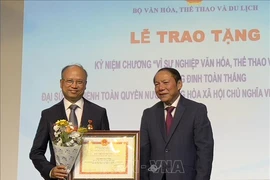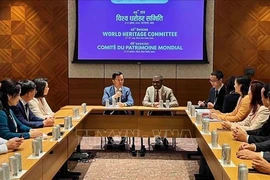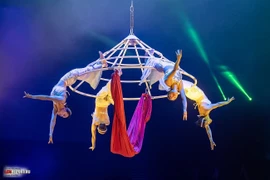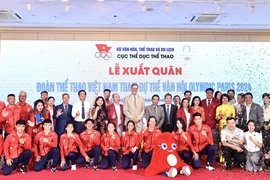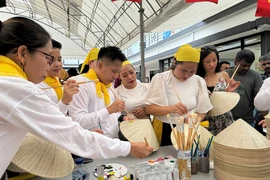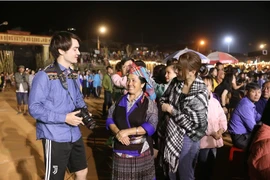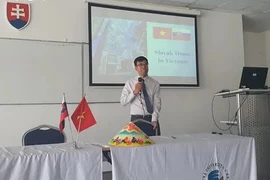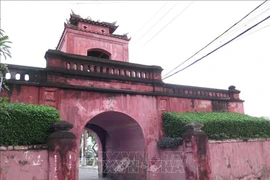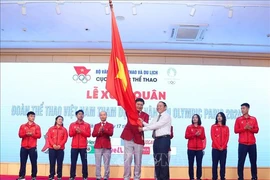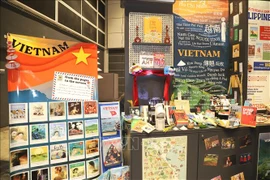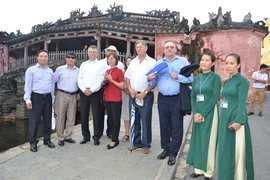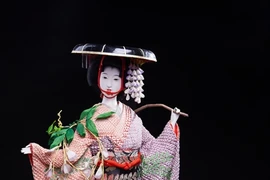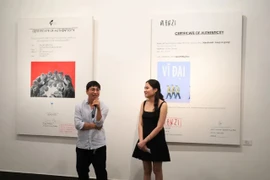The highlight of the exhibition is a display of documents and images on the process of making and issuing calendars during the Le Dynasty, in particular a replica of a cover of an imperial calendar.
According to historian Professor Le Van Lan, starting from the Ly Dynasty, Vietnam began to make its own calendars. The Ly Dynasty built Chinh Duong Tower as a place to monitor time calculations and prepare calendars.
During the Tran Dynasty, astronomer Dang Lo compiled the Hiep Ky calendar, which was used until the Nguyen Dynasty.
Under the Le Dynasty, the country’s calendar included three types: “Ngu lich”, which was a special calendar presented to the emperor, “Quan lich”, for mandarins, and “Dan lich”, for regular folks.
Also at the Thang Long Imperial Citadel, the organisers are displaying traditional Tet customs, such as worshiping the ancestors, hanging Tet pictures, New Year couplets, and New Year greetings. The custom of asking for the first letter of the year has become common among many people.
Within the framework of the exhibition, there are also activities to hear from historians about the process of compiling, engraving, and sealing calendars under the Le court, and demonstrations of unique woodblock carving techniques, among others./.
